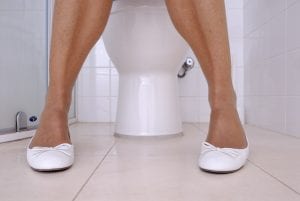The first course of treatment is lifestyle changes, also known as behavioral therapy. This includes removing all the “bladder irritating” foods out of your diet like caffeine, alcohol, soda, artificial sweeteners and spicy food. Keeping a daily diary of trips to the bathroom and food consumed can help you and your doctor understand your symptoms better.
Learning bladder tricks like “double voiding” or “scheduled voiding” can also be helpful in managing your OAB. You might also find relief from training your bladder with “delayed voiding.” Other behavioral therapies, such as pelvic floor exercises (Kegels) can help strengthen your urine control. Biofeedback equipment is another tool that can be used to better identify the muscles that need to be exercised.
Most people do not have relief from all their symptoms with lifestyle changes alone, so your doctor may prescribe a medication. More advanced treatments such as injections of Botox into your bladder muscle may also help to keep your bladder from contracting too often.
Finally, your doctor may suggest nerve stimulation if your quality of life is being more severely affected due to your OAB. Neuromodulation therapy is a group of treatments that deliver electrical pulses to nerves to change how they work within your body. Another option is sacral nerve therapy that is administered by implanting a “bladder pacemaker” (InterStim). This device stops the nerve signals that can cause OAB altogether.
As you can see there are many options available for those struggling with an overactive bladder. Talk to your doctor about what options may be best for you to live a happier, healthier life.




